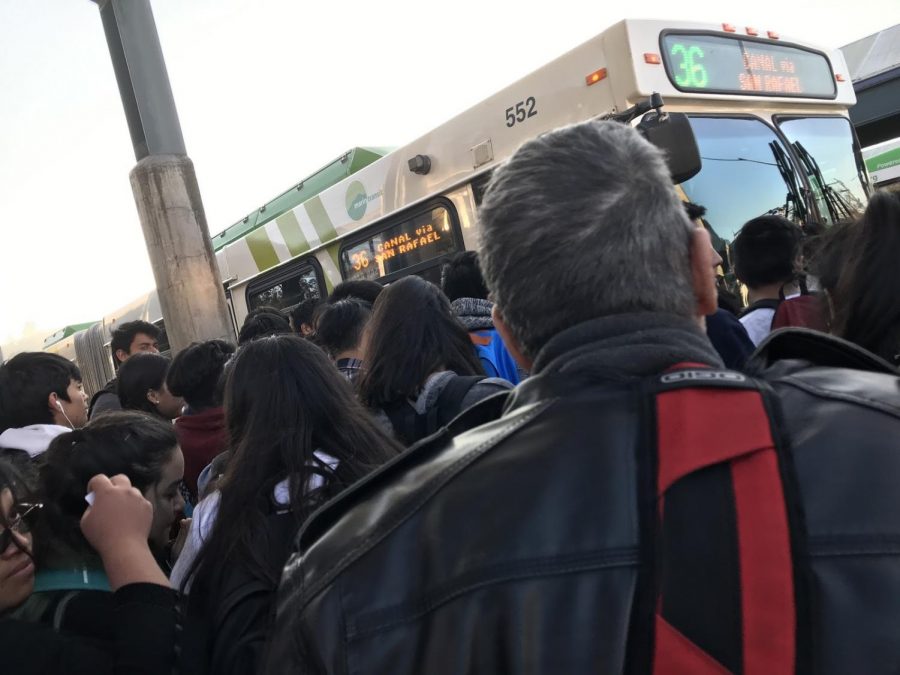Crowding On Transit Frustrates SRHS Students
January 25, 2019
With so many SRHS students using public transportation to get around it is inevitable that there will be crowding. Kimberly Lopez, a 12th grader at San Rafael High School, says that the buses are always packed, especially before and after school.
According to Marin Transit, in the fiscal year 2015-2016, over 3,900 youth pass “stickers” were distributed to 28 participating public and private schools.
Consequently, there has been a lot of pushing and shoving to get on buses. Cristian Chavez, a SRHS 11th grader, has witnessed this first hand saying “getting on the bus is like Black Friday”.
Another student Lisbeth Gutierrez Hernandez, a SRHS 12th grader, describes her similar experiences riding transit to and from school. She says, “It’s always crowded when getting on the bus. Everyone’s always pushing.”
Marin Transit wrote in their Short Range Transit Plan that they have policies in place to prevent overcrowding. “On most vehicles, capacity is limited to 10 standees in addition to the seating capacity. Drivers may allow additional standees if deemed safe.”
Even though more than 10 standing riders are usually allowed on buses at peak times, there will still be many who are not allowed to board due to the limited space.
This makes getting on a bus fairly unreliable. According to a 2017 research report by the Urban Institute Student Transportation Working Group, “student transportation can have a substantial effect on the quality of a student’s education.” The same report stated that reliable public transportation can have a positive effect on students academically.
Not being able to board the bus is also very annoying for many students. According to a 2013 article in Forbes by Jeff McMahon, one of the biggest reasons people tend to stop riding public transportation is being denied boarding due to crowding.
School schedules are a significant factor in ridership. According to the 2018 Q1 Performance Report from Marin Transit, “Generally, the most significant factors for increasing ridership are… the number of school days compared to a year ago.”
According to the Marin Transit website the routes that most SRHS students are taking are the 23, 23x, 39, 35, and 36. All these routes go to the canal area and are the most packed with students before and after school.
Marin Transit does try and help alleviate the issues students face. They do this by working with the schools in Marin County through designating a school or district coordinator. They also look at the school’s schedules.
In their Short Range Transit Plan documents, Marin Transit wrote that they provide frequent bus service using articulated buses in the Canal area of San Rafael to minimize overcrowding. In addition, it ensures passengers to wait no longer than 15 minutes for the next bus during peak periods.
Even though they have policies in place to try and make things better, many students, including with Lisbeth Gutierrez Hernandez and Cristian Chavez, have not noticed any significant changes.






































